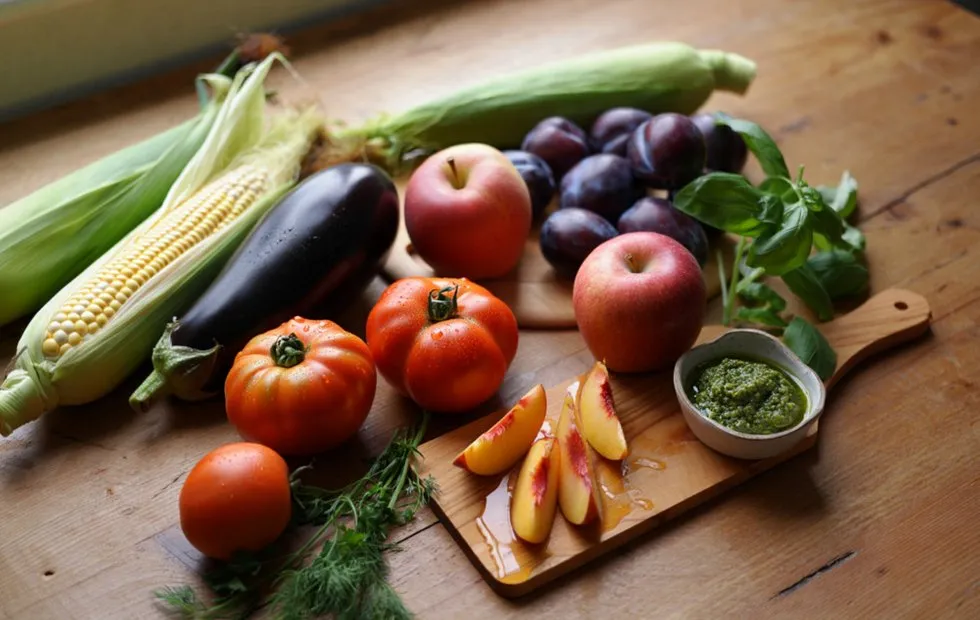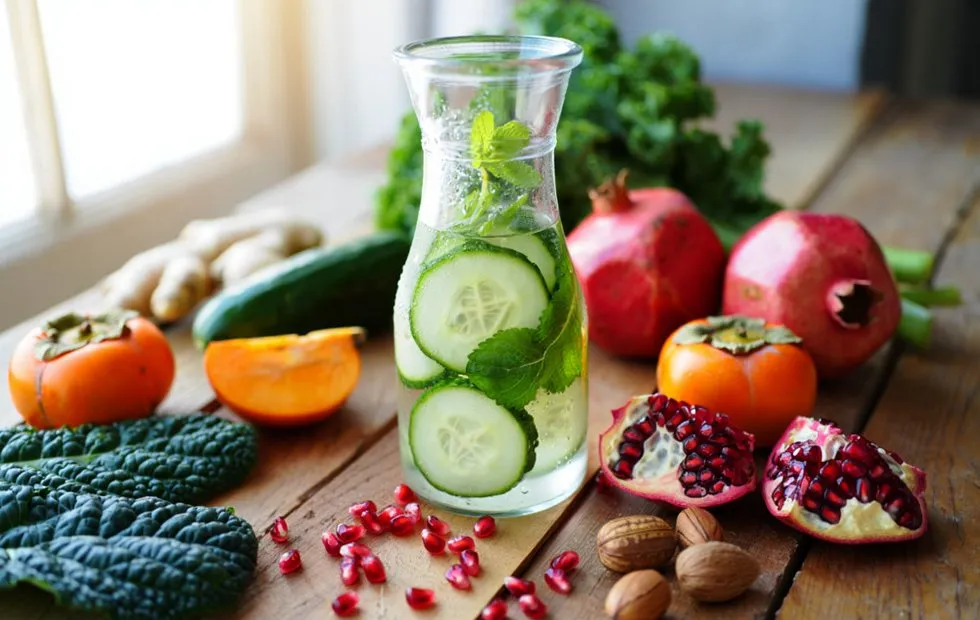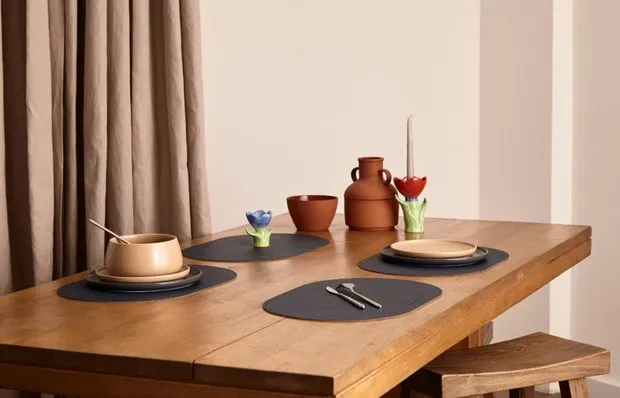There can be your advertisement
300x150
Last Chance to Save the Harvest: 12 Tasks on the Dacha You Can't Postpone Until October
Don't miss the moment — and in October you'll be cursing yourself for laziness, collecting rotting apples under the rain and frantically covering roses with the first frost
September is a cunning month for dacha owners. On one hand, you want to relax after summer work and enjoy warm days. On the other — it's the last month when you can fix seasonal mistakes and prepare for winter without rushing. Don't miss the moment — and in October you'll be cursing yourself for laziness, collecting rotting apples under the rain and frantically covering roses with the first frost. We tell you which tasks in September are critically important, and which can be calmly postponed.
Main points from the article:
- Harvesting apples and pears must be completed by September 20 — after that, fruits lose their keeping quality;
- Planting winter garlic and onions is optimal in the third decade of September when soil temperature reaches +10-12°C;
- Pruning roses, clematis and grapes should only be done at the end of the month after sap movement slows down;
- Winter sowing of carrots, parsley and dill — in the last days of September with stable cool weather;
- Seed collection of annuals (zinnias, poppies, cosmos) is only possible during dry weather;
- Division and transplanting of perennials (peonies, irises, lilies) — until September 15;
- Fertilizing the lawn with potassium-phosphorus fertilizers increases grass winter hardiness by 40%.
Harvest races: what to harvest first
September is a month of bountiful harvest, but also one of tough deadlines. Each fruit type has its own timing, and missing it risks losing the entire harvest.
- Winter apples are picked from September 5 to 20. The main indicator of readiness is when fruits begin to fall, but not en masse. Fallen apples for storage are unsuitable, so there's no time to waste. Harvest carefully with the stem in dry weather. Damaged fruits should be processed immediately — one rotten apple will spoil an entire box.
- Pears are harvested even earlier — they ripen in storage. If a pear easily detaches from the branch when lifted upward, it's time to pick. Overripe pears become powdery and lose flavor.
- Late cabbage requires special attention. At temperatures above +15°C, heads may crack from excess moisture. Therefore, reduce watering in warm days or better yet, cut roots on one side — this will slow water uptake.
- Root vegetables (carrots, beets, radishes) are harvested at the end of the month. Cool September nights cause plants to accumulate sugar — root vegetables become sweeter and store better.

Winter plantings: risky but profitable
September is the time for late fall plantings, which give a 2-3 week advantage over spring ones. But timing is key — don't rush and don't be late.
- Winter garlic is planted in the third decade of September when soil temperature stabilizes at +10-12°C. Earlier — it will germinate and freeze, later — won't have time to root in. Planting depth is 3 times the size of a clove, spacing between cloves — 10-15 cm.
- Onion sets for winter are a great way to get early greens. Plant small bulbs (diameter 1-1.5 cm) at the same time as garlic. Large sets will go to flower stalks.
- Tulips, narcissus, crocuses are planted from mid-September to early October. Bulbs must root before frost, but not sprout. Optimal soil temperature — +6-10°C.
- Winter sowing of carrots, parsley, dill, lettuce is done at the end of the month. Seeds must swell but not sprout. Increase seeding rate by 1.5 times — some seeds may not survive the winter.
Pruning: when it's safe and when it isn't
September pruning is a controversial topic. Some consider it mandatory, others categorically oppose it. Truth lies somewhere in the middle.
- Roses are pruned only at the end of September and only partially — remove non-ripened shoots, diseased or broken branches. Major pruning is postponed to spring. Exception — climbing roses that must be removed from supports before frost.
- Grapes in the middle belt are pruned after leaf fall, when sap movement completely stops. In September you can only thin — remove side shoots to help the vine ripen.
- Fruit trees are not pruned in autumn! Wounds won't heal before frost, and the tree may die. Maximum — sanitary pruning of dry or diseased branches.
- Clematis of the third group (blooming on current year's shoots) can be pruned at the end of September. First and second groups — only in spring.
Perennials: to divide or not to divide
September is the best time for dividing perennials. Heat has subsided, but soil is still warm — ideal conditions for rooting.
- Peonies are divided every 10-15 years in the first half of September. Dig up the whole clump, wash off soil and cut with a sharp knife so each division has 3-5 buds and some rhizome.
- Iris are divided every 4-5 years right after flowering or in September. Cut rhizomes into pieces 10-15 cm long with a fan of leaves. Trim leaves by one-third.
- Lilies can be left undivided for 10-15 years, but dividing them helps rejuvenate the clump. Dig up the plant, rinse roots and divide by hand or with a sharp knife.
- Phlox are divided every 5-6 years. You can dig up the entire clump or separate part by digging from one side.
- Hostas are easily divided. The key is to avoid damaging the root system and water abundantly after planting.
Lawn: final feeding before winter
September lawn care is the key to its beauty in the next season. Many dacha owners forget about grass after summer, only to be surprised by patches in spring.
- Fertilizing with potassium-phosphorus fertilizers (without nitrogen!) is mandatory in the first half of September. Potassium increases frost resistance, phosphorus strengthens root systems. Rate — 30-40 g per square meter.
- Last mowing of the lawn — at the end of September. Mowing height — 4-5 cm. Too short mowing weakens grass before winter, too long — promotes thatch buildup.
- Aeration is especially important on heavy soils. Poke the turf with forks or a specialized aerator to 10-15 cm depth. This improves air circulation and drainage.
- Re-seeding damaged areas is possible until mid-September. Later, seeds won't have time to germinate and strengthen before frost.
Seed collection: catching the last chance
September is the final opportunity to collect seeds of annuals for next season. But not all seeds mature at once, and not all should be collected.
- Poppies — great seeds for beginners. Mature quickly, with nearly 100% germination rate. Collect during dry weather when the seed heads are fully dried.
- Zinnias produce good seeds but require patience. Seeds mature unevenly — collect as they ripen.
- Asters seeds mature 40-45 days after flowering begins. Collect when seed heads become fluffy.
- Cosmos can self-seed and infest the whole plot, so seeds are better collected. Mature in September-October.
- Marigolds — low-maintenance flowers with large seeds. Collect seeds from the first opened blooms — they are of highest quality.
Don't collect seeds from F1 hybrids — they don't reproduce the traits of the parent plant.
Protecting roses: preparing but not rushing
Preparing roses for winter starts in September, but actual covering is only done after stable frosts.
- Stopping nitrogen fertilization — from early September. Final feeding is phosphorus-potassium in the middle of the month.
- Reducing watering helps shoots ripen. Water only during dry weather and moderately.
- Removing lower leaves prevents fungal diseases. Start from the bottom, gradually moving upward.
- Hilling with dry soil or peat to 15-20 cm height — at the end of the month. This protects the root neck from frost.
- Treating with copper-containing preparations (Bordeaux mixture, HOM) — prevention of fungal diseases for winter.
Tasks that can be postponed
Not all dacha tasks are urgent. Some can be calmly moved to October:
- Planting fruit tree seedlings (better in October);
- Whitewashing trunks (more effective in November before frost);
- Covering heat-loving plants (too early);
- Re-tilling garden beds (can be done until November);
- Pruning ornamental shrubs (spring is safer).
September on the dacha is a month of strategic decisions. Doing everything on time — you'll enjoy results all next season. Don't be lazy — you'll face the consequences until summer. The choice is yours.
More articles:
 Secrets of August Kitchen: Cooking in a Way That Makes the Family Ask for More
Secrets of August Kitchen: Cooking in a Way That Makes the Family Ask for More Autumn Capsule: How to Build a Wardrobe of 20 Items and Look Different Every Day
Autumn Capsule: How to Build a Wardrobe of 20 Items and Look Different Every Day Before and After: Stylish and Budget-Friendly Bathroom Renovation in a Khrushchyovka
Before and After: Stylish and Budget-Friendly Bathroom Renovation in a Khrushchyovka Autumn Detox: What Works and What's Just Marketing Hype
Autumn Detox: What Works and What's Just Marketing Hype Repairing a Stalin-era Apartment for Half a Million Rubles: How to Preserve the Era's Spirit and Add Comfort
Repairing a Stalin-era Apartment for Half a Million Rubles: How to Preserve the Era's Spirit and Add Comfort Secrets of Elegance: Coco Chanel's Lifestyle and Style Rules
Secrets of Elegance: Coco Chanel's Lifestyle and Style Rules Ships and Towers: Most Unusual Houses of the 70s-80s
Ships and Towers: Most Unusual Houses of the 70s-80s 10 Trendy Finds That Will Inspire Coziness and Order
10 Trendy Finds That Will Inspire Coziness and Order